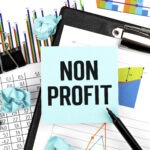By Amy Rybar Menefee, CPA, CFE, Partner

By Amy Rybar Menefee, Business Assurance & Advisory Services Senior Manager | Not-for-Profit Team
Charitable giving has grown each of the past four years starting in 2012, according to the 2015 Charitable Giving Report from fundraising software company Blackbaud. The report includes data for total giving from 5,379 not-for-profit organizations totaling $18.2 billion in total fundraising for 2015.
Based on the information from the organizations in the study, giving grew 1.6% in 2015, 2.1% in 2014 and 4.9% in 2013. In 2015, international organizations saw the biggest increase in growth, 5.1%, due to global events including the earthquake in Nepal, the ebola outbreak, conflict in Sudan, drought in Somalia and violence in Africa and Syria. Human service organizations, the largest category of not-for-profits in the United States in terms of number, had the largest declines with a decrease in giving of 2.8% in 2015.
Economic health has a significant effect on giving to not-for-profit organizations. Even not-for-profit organizations with large endowment funds experience decreased revenues in a down economic time because their investment income is dependent on economic conditions. It is important for not-for-profit organizations to develop and maintain, as well as modify, their strategy for donor solicitation in order to create excitement around their organization’s purpose and have the financial backing to fulfill their programmatic goals. Use of technology is one way this goal may be accomplished.
Data Analysis
Most not-for-profit organizations maintain a database which houses data on donors, members, volunteers and employees. Analyzing this data can help to better understand existing donors as well as prospective donors. One way data analysis is used is to build donor lists that target potential donors for a specific programmatic area or a specific solicitation method so that direct mail resources, emails or phone calls can be targeted to get the most return on those efforts. This is particularly critical because a significant portion of donors are older Americans who may find it easiest to mail a check or make a payment over the phone than to donate online. Americans 65 and older are the fastest-growing segment of the population and are projected to increase by more than 50% between 2015 and 2030. Sending these donors or prospective donors an email or directing them to a website would be ineffective.
Online Donations
However, many donors do contribute over secure websites. Not only is this easy for many donors, but it also reduces administrative costs to the organization. One solicitation strategy is to use an email campaign that directs prospective donors to the organization’s website, which are most effective when the information on them is kept current and includes stories of how the organization has fulfilled its programmatic mission in order to entice prospective donors to give. Online giving opportunities are critical to fund-raising, especially if the gifts can be set up on a recurring basis with no additional action required by the donor.
Social Media
In addition, not-for-profit organizations use social media to advertise their cause as well as their upcoming events, and interact with prospective donors by maintaining profiles on social networking sites including Facebook and Twitter. Social media can also be used for current donors and volunteers to recruit their friends to donate or volunteer with one click of a mouse.
Successful not-for-profits have efficient operations and are able to match expenses with revenues that may fluctuate significantly from year to year and/or structure a reasonably predictable revenue stream so that much of the guess work is taken out of what may be coming in to help run the organization and fulfill the programmatic purpose. Taking full advantage of technology in fundraising can assist with the achievement of this goal.
Questions on leveraging technology to support your organization’s charitable goals? Contact us. We work with hundreds of not-for-profit organizations and can provide you with insights on this and other not-for-profit related concerns.
Sources:
About the Author
The information contained within this article is provided for informational purposes only and is current as of the date published. Online readers are advised not to act upon this information without seeking the service of a professional accountant, as this article is not a substitute for obtaining accounting, tax, or financial advice from a professional accountant.



